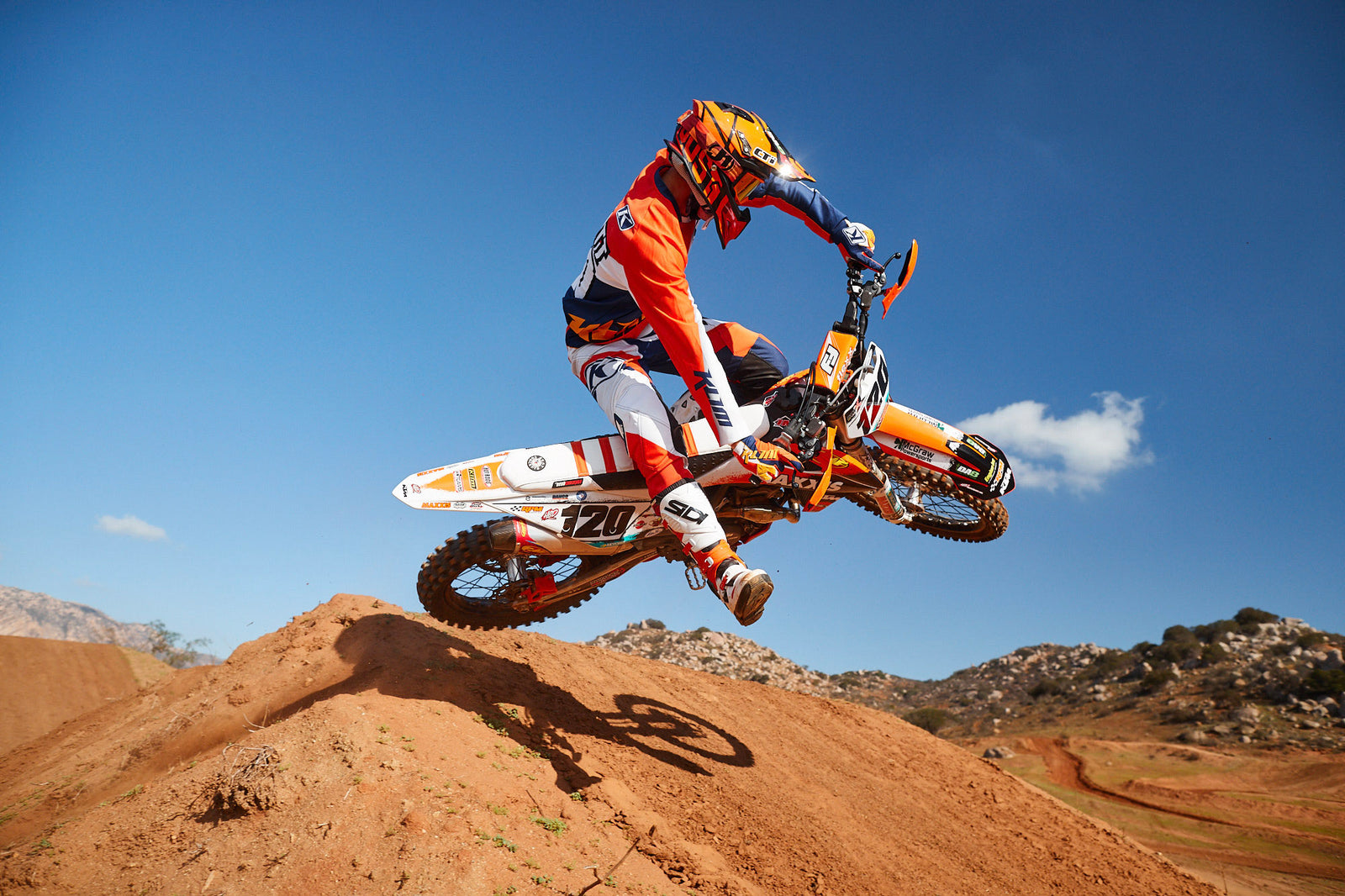3 Crucial Dimensions Of A Bar Bend

A More In Depth Bar Bend Blog!
In our last blog we discussed the 5 most important things to consider when selecting a bar bend in terms of rider preferences and ergonomics (link HERE). We got a lot of bar bend related questions, so in this installment we’re taking it a step further and looking at the 3 most crucial dimensions of a bar bend, and what they mean in terms of adding comfort to your time on the bike. We’ll address these dimensions in terms of importance, starting with sweep, height, then width. At the end of the day, the main contact point between bike and rider are your hands and feet, so it’s the most sensible place to add comfort.
1. Bar Sweep
Most of your attention should be paid to the back sweep of the bar. The back sweep is something that’s relative to rider height. Traditionally we see taller riders prefer a straighter bar, and shorter riders prefer something more neutral. Obviously that’s not black and white, there’s some gray area, but generally speaking a taller rider benefits from a straighter bar as it opens up the ergonomics and allows for more operating room in the cockpit, and a shorter rider benefits from something more neutral.
How does bar sweep affect the rider:
If the bar has too much back sweep for a rider they’ll find it hard to keep their elbows up. You should be on a bar bend that will allow you to have your elbows up so you’re square on the bike and in a powerful position. If you’re on a bar with a lot of sweep it’ll force your elbows into your lap and if/when you get out of control, you’re not in a good position to control the bike. If you’re a taller rider rolling your bar forward (+1.5/2 on the bar grid) it suggests you want a straighter feel. You’re rolling the bar forward to get a straighter feel/more operating room, but as you roll the bar forward, the back sweep starts turning into the rise of the handles, and then the discomfort issues start compounding. If you’re rolling your bar forward, it’s safe to say there’s a more suitable bar bend for you and the riding you’re doing.
If a taller rider is on a bar with a lot of back sweep, it can make the cockpit feel cramped and cause aching on the outsides of your hands. A lot of times once the rider feels cramped, they have a hard time deciphering if the issue is bar height or bar sweep. More often than not, the sweep is the issue (consider bar height totally separate in terms of feeling cramped in the cockpit, and read below for more info).
For shorter riders, too straight of a bar can have you feeling like you’re really reaching. If you’re rolling your bars back past -2 on the bar grid you most likely need a bar with more sweep, as you’re trying to bring the bar closer to you. Rolling the bar towards the rider turns the rise into the sweep, putting the rider in an adverse position.
2. Bar Height
The best rule of thumb in terms of bar height is “The taller you go, the less the bike will like to turn.” But changing bar heights can be a great way to fine tune your ergonomics. Obviously riders of different heights will prefer different height bar set ups, but changing overall bar height affects more than your ergonomics as it can have positive and negative impacts on the balance and handling of the bike.
How does bar height affect the bike:
Lowering your overall bar height will typically not have negative impacts on the handling or balance of the machine as it brings the center of gravity of the bike and rider lower. Lower bar heights keep the rider more central on the bike where the OEM intended the rider to be so the balance of the bike is not adversely affected. Stock and lower bar heights often enable a more powerful attack position on the motorcycle. However, with a taller bar, the center of gravity is raised, bringing the weight higher and further back, ultimately changing how the bike will turn.
How does bar height affect the rider:
The down side of lower overall bar heights is that it can fatigue the rider more quickly, often fatiguing the lower back first. Some taller riders find lower bar heights create too tight of a cockpit, making them feel cramped. Taller bars allow the rider to stand up straighter, which takes a load off the riders lower back. The downside is it significantly raises the center of gravity of the bike and body, as well as takes the rider out of the attack/powerful position. When seated, a tall bar height can offer a “chopperish” feel, fatiguing your upper arms, shoulders and upper back more quickly. A good way of assessing bar height is to address your goals; If you’re racing, keep bar height as close to stock as you comfortably can for handling purposes. If you’re just a casual trail rider and need added height for comfort, that’s perfectly fine, just be aware that a taller bar will play into how the bike handles.
If you look at the bar set ups on pro riders at any Supercross, MX National, GNCC, WORCS, or even a National Hare and Hound, no matter the riders height the bar heights are all very similar. There’s a reason you almost never see the top riders run a tall bar set up, as it will change the balance of the bike as well as negate proper body positioning for most riders. Additionally a tall bar will raise the center of gravity of the bike and rider which has huge ramifications when the bike gets out of sorts.
3. Bar Width
Bar width is more personal preference than anything, but can certainly play into comfort. If you’re on a bar that’s too wide for your wingspan, you’ll most likely feel some aching on the inside of your hand (thumb and pointer finger). Aside from that, bar width is pretty open ended. If you’re riding a lot of tight and technical single track, you might prefer a narrow bar to squeeze through tight sections. If you’re riding a lot of fast and open terrain, a wider bar will make the bike feel more stable at higher speeds. So although bar width is a factor, it’s the least important of the three.
In closing, try to think of bar bend and bar position as the seat position in your car. If you tried to drive your friends car across the country without changing the seat position you wouldn’t be very comfortable. It’s surprising how much comfort can be found when the bar/cockpit is tailor fit to you and your preferences. After 15 years of all things bar bends, we’ve spent countless hours chatting one-on-one with thousands of riders of all different sizes, skills, and disciplines to help add comfort to their time on the bike. If you’re struggling with your ergonomics or just feel like your bar bend is holding you back, don’t hesitate to reach out. We’re here to help and more than happy to do so.
